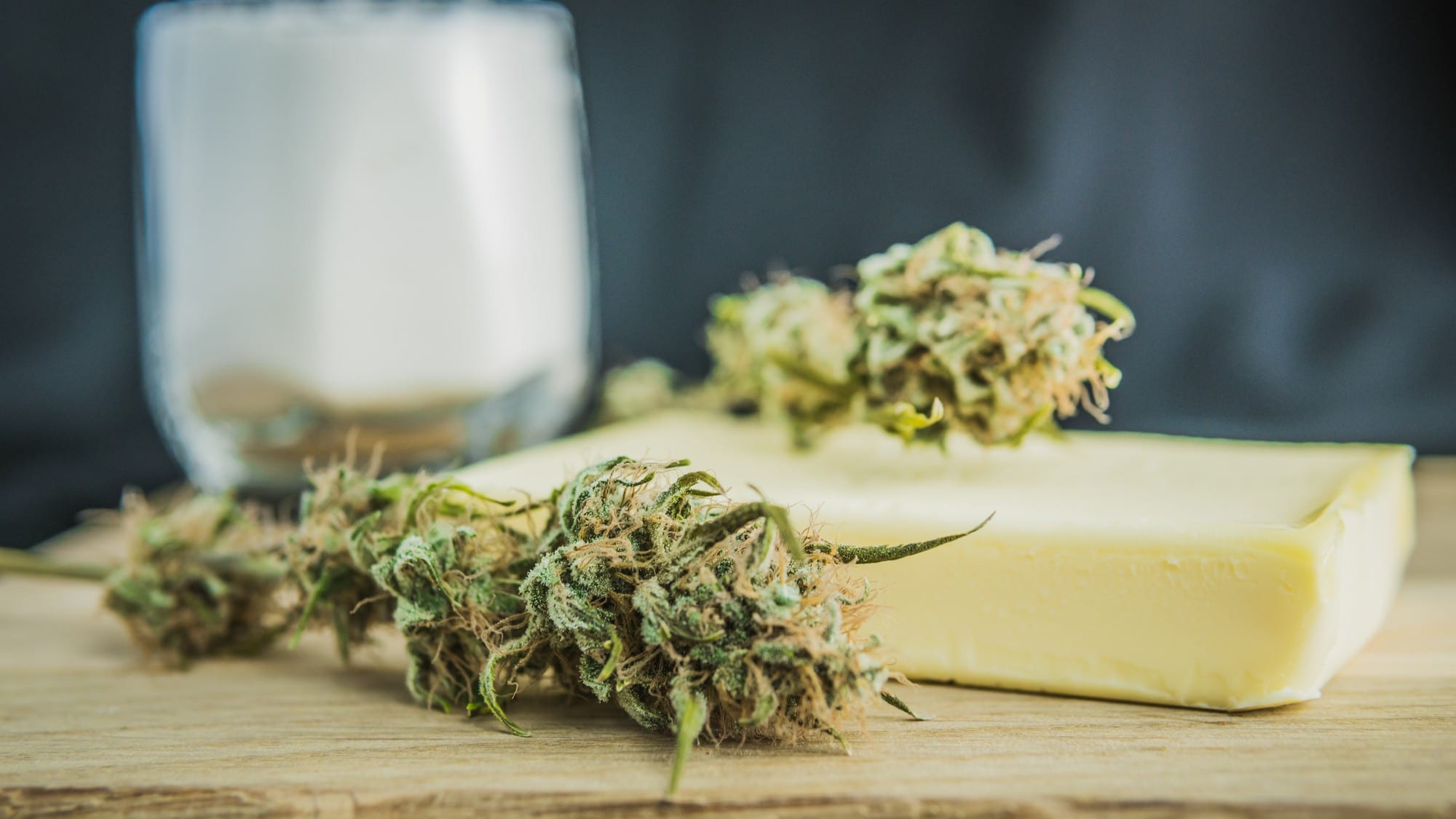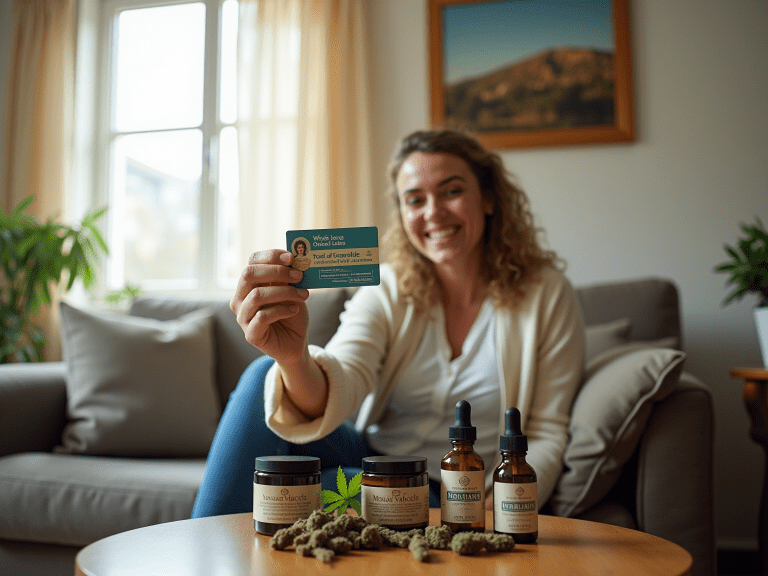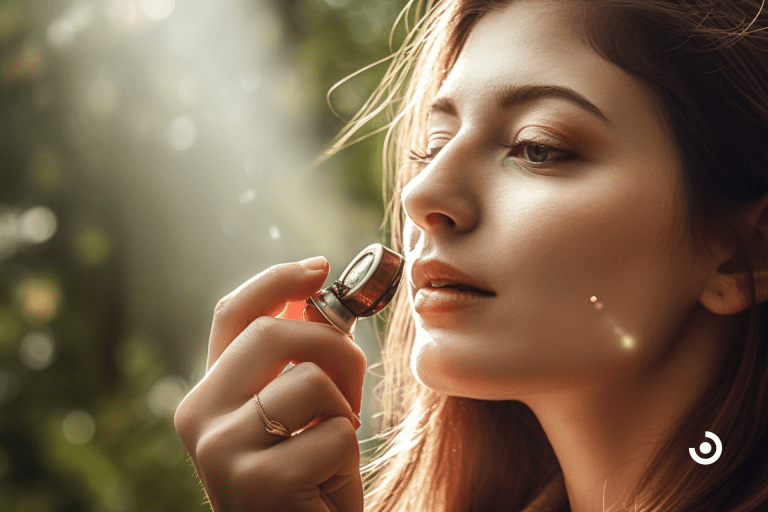How to Make Edibles
by Haley Mills · December 21, 2022
Are you looking to learn how to make your own delicious edibles? Look no further! Learn the basics of making edibles, from ingredients and recipes to tips on dosage and storage.

Edibles are an option for those who aren’t interested in smoking cannabis, but still want to try the therapeutic benefits of the plant. Read on for information about dosing and making your own marijuana edibles.
What are edibles?
Edible cannabis products contain cannabinoids that you can consume by eating or drinking. Cannabinoids are chemical compounds found in cannabis that can affect your mind and body after consumption. THC (tetrahydrocannabinol) and CBD (cannabidiol) are two common cannabinoids that offer different effects. THC makes an individual feel high, while CBD relieves pain and promotes sleep.
How do they work?
Edibles are consumed and digested through cannabis infusion, encouraging the body’s endocannabinoid system (ECS) to do its job. The endocannabinoid system comprises an extensive network of chemical signals and cellular receptors densely packed throughout our brains and bodies.
The “cannabinoid” receptors in the brain — the CB1 receptors — outnumber many other receptor types in the brain. They regulate the body through immediate feedback, turning up or down the movement of whichever system needs to be adjusted, whether hunger, temperature, or alertness. Our bodies produce molecules called endocannabinoids to stimulate these receptors, which have a structural similarity to molecules in the cannabis plant.
The endocannabinoid system regulates learning and memory, emotional processing, sleep, temperature control, pain control, inflammatory and immune responses, and eating. This vital system is currently at the center of renewed international research and drug development.
Here are a few ways cannabis edibles have been used throughout history:
- Cannabis use in edibles dates back to the Middle Age, over 50,000 years ago. Marijuana is considered one of the first plants humans explored for consumption and medicinal purposes. Ancient India held the “origin of edibles” through a hash-filled confection called mahjoun.
- In Medieval times, Uzbekistan created guc-kand with THC for pain relief and sexual performance. Indonesia used marijuana in a toffee candy called dodol Aceh, while Cambodia infused Khmer foods with cannabis. Greece had khylos, a cannabis-infused wine steeped for several days.
- The Polish would combine cannabis seeds with salt, olive or coconut oil, and cannabutter and place it on a piece of crusty bread. Since then, as medical marijuana and recreational legalization grow in popularity, cannabis has been used to make edibles more than ever before.
- Human civilizations have made homemade cannabis edibles for centuries, beginning with the invention of bhang. Bhang is prepared from the buds of a cannabis plant and then typically consumed as a beverage in parts of South Asia. It combines milk, spices, and ghee crafted to infuse food and drinks with cannabis for medicinal benefits.
Marijuana and health conditions
Medical marijuana is commonly found to possess significant anti-inflammatory and antioxidant properties, which can help with chronic pain management reasonably quickly. Cannabinoid receptors (CBD and THC) bind to the brain and peripheral nerve cells and help regulate how you see and feel the pain to reduce symptoms.
Certain marijuana strains have been known to reduce anxiety and depression, promote creativity and motivation and increase appetite while reducing nausea.
A few therapeutic benefits include:
- blood pressure regulation
- stress relief and muscle relaxant
- depression and anxiety control
- reducing inflammation
- fighting cancer and its symptoms
- can help with alcohol and hard drug addiction
- anti-convulsion/ anti-seizure, tremor relief
- gastrointestinal disorders
- appetite and weight management
- can improve lung capacity
- neuroprotectant
- PTSD management
- autism treatment
- ADD/ADHD treatment
- chronic pain relief
- fibromyalgia
- glaucoma
- arthritis
- multiple sclerosis
- Endometriosis
Are edibles legal?
Cannabis-infused edibles are legal in certain states within the United States as long as they are produced by licensed cultivators and manufacturers of cannabis or industrial hemp. We suggest checking your local laws to know what is allowed in your state regarding THC and hemp.
How Long Does it Take for Edibles to Kick in?
It usually takes thirty to ninety minutes to feel the full effects of weed edible foods. Reaction times can typically last two to four hours; however, this depends on dosage, tolerance level, body weight, and metabolism.
What is Cannabis Butter?
Cannabutter is unsalted butter infused with cannabis and is an essential ingredient in many delicious weed edibles. It’s just one of the numerous ways to consume marijuana, but definitely among the most popular.
Weed brownies and many other homemade edibles typically use a cannabutter replacement for unsalted butter. This is a tasty way to receive the high that comes with adding THC to your food. Especially for those that don’t enjoy smoking marijuana, cannabis butter is just as effective for enjoying the benefits of cannabis without the smoke.
When utilizing cannabutter, there are endless possibilities for substitution. Really, with any recipe that calls for butter, cooking oil, olive oil, coconut oil, etc., cannabis-infused butter can be used as a replacement.
The Food Innovation Group, including top brands such as Bon Appetit and Epicurious, has featured many cannabis dishes, chefs, and restaurants in the past few years. The cannabis food industry will become more relevant as legal access grows.
Edible and Cannabutter Storage Tips
It’s best to use your cannabis edibles as quickly as possible within reason. The shelf-life of most edibles will be up to six months, depending on the quality. You will lose other cannabinoids, and the relative potency will decrease with time. However, frozen cannabis-infused butter and edibles can last much longer.
It’s best to store the cannabutter in a sealed container inside the refrigerator. Filling mason jars is useful. Edibles can also be stored in opaque glasses and opaque containers. In addition to decarbed cannabis, light exposure can decrease the lasting effects of your own weed edibles. Always smell and taste older cannabis butter and edibles before using them.
Edibles Dosage Information
For THC edibles, start with a low dose (1 ml ), then up your dosage as you feel comfortable doing so. For best results, increase your dosage of cannabis oil slowly over a few weeks to reduce discomfort and ensure you safely consume cannabis.
When making edibles started, cannabis users weren’t necessarily keen on the potency of the recipe. The cannabis education and tools just weren’t out there yet. But they are now. Today’s cannabis consumers are more familiar with personal usage and dosage thanks to the introduction of retail-regulated edible products.
Proper dosage of cannabis butter can be tricky as many variables are involved. The best idea for beginner use is always to consume less than you believe you’ll need. For your first batch, start low and move up in increments from there, depending on your desired effects. Don’t consume more butter immediately without knowing its relative power and tolerance. No matter what, wait a couple of days to increase the dosage after your first experience.
The quantity of cannabis differs depending on the strain, recipe, and technique you use. What you want to know is THCA percent. The THCA is measurable on most legal marijuana jars, so it should be easily found. The below site provides an approximation equation that helps to calculate doses. It gives a reasonable estimation of how much butter you’ll use and can be used as a guideline for dosage.
Remember, many variables determine the amount of THC you are consuming through cannabis-infused foods.
FAQs- Cooking with MMJ
Decarb before adding ground raw cannabis. If you don’t use decarboxylated weed, the butter will not taste ideal and less potent because the cannabinoids do not have time to activate entirely. Low heat is the way to go with this process for the best marijuana and delicious recipes.
Get the grind right. A hand grinder or coarse coffee grinder is suggested for optimum results when grinding your raw weed.
Be patient when straining. A cheesecloth, gravity, and time are the three ingredients needed to strain your marijuana-infused butter properly. Do not squeeze the cloth at the risk of adding in excess cannabis flower.
Mix the batch well. Remember to occasionally stir when making vegan baked goods and products with this cannabutter recipe for an even level of THC potency and flavors throughout the cannabis tincture.
Conclusion
While the world of cannabis edibles may seem overwhelming at first, becoming better at cooking cannabis is about perfecting a few recipes and then experimenting with a new recipe as you feel comfortable in the kitchen. This is how to make edibles that are potent, safe, and tasty.
We recommend beginning with one of your favorite delicious recipes and substituting the standard oil or butter for your medical cannabis oil or cannabutter. Once you get that recipe down, you can move to more advanced edible recipes. There are also many store-bought edible options for those who want to leave the chemistry to the experts. Whatever method you choose, edibles can provide weed’s medicinal benefits without always having to light up.
Last Updated: August 8, 2024
Get Approved for Your Medical Marijuana Card in Minutes!

Get Your Medical Card
Connect with a licensed physician online in minutes

Like This Article?
Share with your friends
Table of Contents
Keep Reading
-
How to Get a Medical Marijuana Card in TX: A Step-by-Step Guide
Learn how to get a medical marijuana card in TX with our step-by-step guide.
-
4 Steps to Obtain Your Medical Weed Card California
Learn how to obtain your medical weed card in California with our step-by-step guide.
-
Uses For Cannabis-Infused Lip Balm
Unlock the power of cannabis-infused lip balm for irresistibly smooth lips. Say goodbye to dryness and hello to a natural beauty revolution. Click here to learn more about the benefits of cannabis lip balm!



